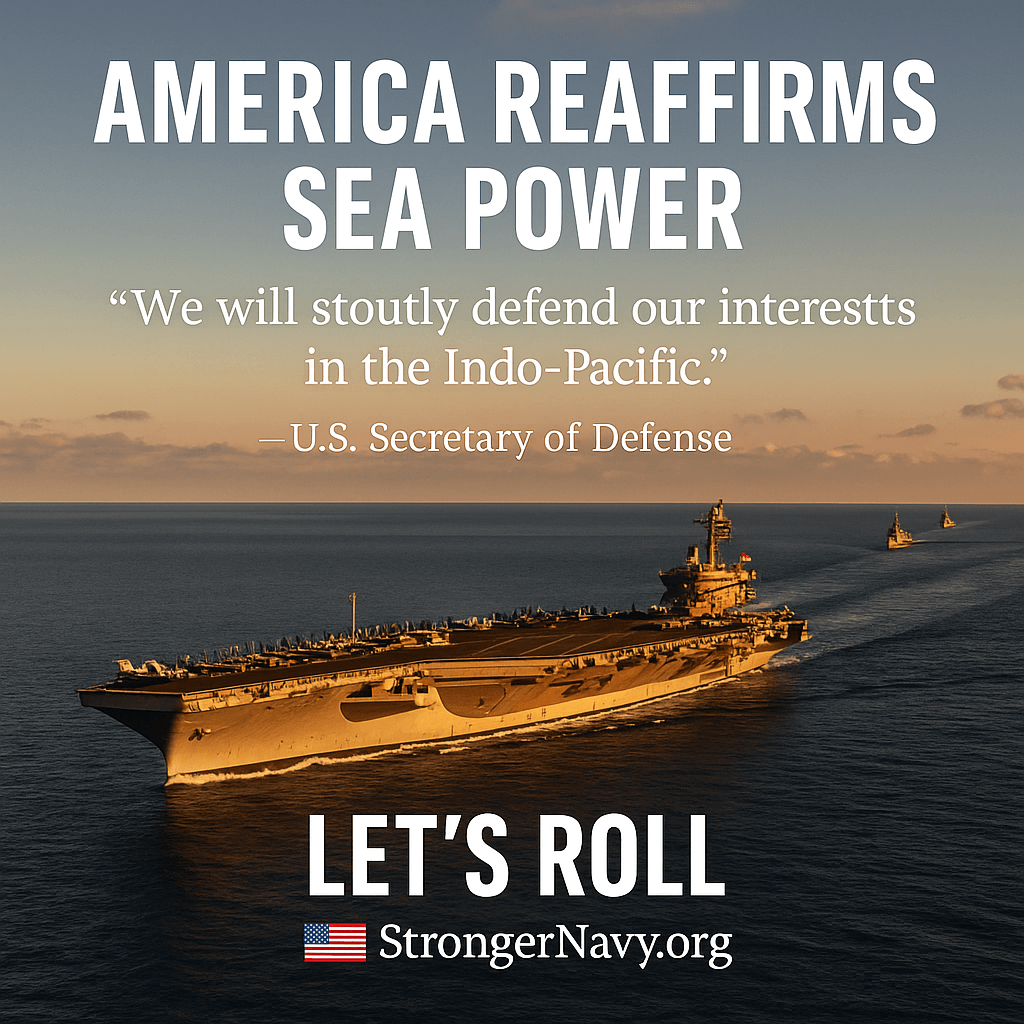
Diplomacy may set the course, but it’s sea power that keeps America’s word.
The United States sent a clear message this week: America’s leadership in the Indo-Pacific is anchored in naval strength. During high-level talks in Malaysia, the U.S. Secretary of Defense told his Chinese counterpart that Washington would “stoutly defend” its interests in the region. The statement came as part of a broader effort to strengthen alliances, including a new ten-year defense framework signed with India to deepen cooperation on security, logistics, and maritime resilience.
These developments unfolded against a backdrop of rising tension in the South China Sea. Malaysia has long protested China’s encroachment into its waters but tends toward quiet diplomacy. The Philippines, by contrast, has faced direct confrontations with Chinese vessels in recent months. China continues to claim nearly the entire South China Sea, overlapping the sovereign waters of Malaysia, the Philippines, Vietnam, and Taiwan.
The stakes grew even higher after President Trump suggested the United States could resume nuclear testing “on an equal basis” with Russia and China—a statement that unsettled regional leaders gathered for ASEAN meetings. While there is no evidence of imminent testing, Malaysia’s defense minister reminded the world that Southeast Asia is a nuclear weapon–free zone, saying, “we try to avoid anything that can bring great calamity to humankind.” The contrast was sharp: diplomacy rooted in restraint, and deterrence rooted in readiness.
Why Americans Should Care
The Indo-Pacific is not some faraway concern—it’s the main artery of global trade. Nearly two-thirds of the world’s shipping passes through these waters, carrying the energy, food, and goods that fuel the U.S. economy. If those lanes falter, Americans feel it—in prices at the pump, empty shelves, and economic uncertainty. Naval presence ensures stability, deters coercion, and protects the commerce that keeps the world running.
When the Secretary of Defense tells China that the U.S. will defend its interests, he’s not only speaking for Washington; he’s speaking for every American whose livelihood depends on the free flow of goods and information across the sea.
Implications for the Navy
The new U.S.–India defense pact expands the Navy’s reach and resilience. It strengthens logistics, basing access, and cooperative training—critical components of readiness across the Indo-Pacific. It also reinforces deterrence by showing that America’s commitments are backed by capable partners who share the burden of keeping sea lanes open.
Alfred Thayer Mahan’s lesson still holds true: “Sea power rests upon commerce, and commerce upon the sea.” America’s naval statecraft—its ability to shape world affairs through maritime strength—is what gives diplomacy substance. Without credible power at sea, treaties become talk, and deterrence becomes doubt.
Implications for Our Allies
For India, this agreement signals deeper trust and shared purpose. For Malaysia and the Philippines, it offers reassurance amid mounting pressure from Beijing. For ASEAN as a whole, it underscores that the United States remains a committed partner in preserving peace through strength.
At a time when China’s maritime reach grows bolder, America’s reaffirmation of sea power reminds allies that the free world’s unity still matters—and that the Navy remains the backbone of that unity.
Civic Engagement and Responsibility
At Americans for a Stronger Navy, we believe that public understanding is the missing link in national defense. A strong Navy doesn’t just defend territory—it defends prosperity, stability, and credibility. Every American has a role in that mission, from taxpayers who demand accountability to educators who teach civic responsibility. The Navy belongs to the people, and so does the future it protects.
That’s why we launched Charting the Course: Voices That Matter — a 24-part educational series breaking down how we got here, what went wrong, and what must happen next. Our goal is simple: educate the public, connect the dots, and build the support needed to close the readiness gap before it’s too late.
Let’s roll.

